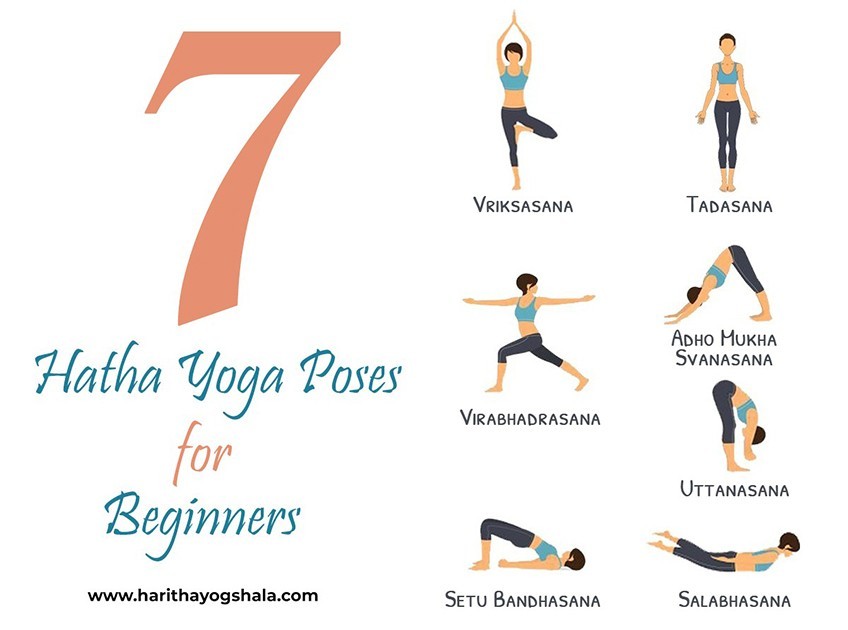
Achieving Yoga Teacher Training is a great way to learn more about this ancient art. This certification program can be used to teach Yoga. This certification program is not limited to yoga teachers. People from all walks can benefit from this training. Here are some of the reasons why you should do it. You will learn valuable skills and insights through yoga teacher training. With this training, you will be able to design and lead your own classes. Another advantage to this program is the fact that you will be supported by experienced professionals who can guide you.
Yoga teacher training consists of many different components. The program prepares you for teaching yoga. You will discover a variety different styles and methods that work for you. This will ensure that your teacher training is as individual as your students. These courses will prove to be extremely beneficial for those who have long wanted to teach. These courses offer many classes and you have the option to choose which one suits your needs and schedule.

First, you must find your voice in teacher training. It might sound odd at first. It might sound odd at first. We spend hours at our computers and rarely communicate without our smartphones or emails. It can be frightening to perform yoga in front of others, so it is a good idea to learn how to do it properly.
Once you have a solid foundation of knowledge, it's time to get specialized training. Teacher training in yoga will allow you to teach yoga in various settings. Learn about yoga's anatomy, how to instruct in different types of poses and how to arrange postures in a class. You'll also learn how to communicate with your students, guiding them to learn the correct alignment for their bodies and their minds.
Once you have found your voice, it is time to find a way you can use it. You may initially think that your voice sounds too loud, low, or monotone. But it's okay! Most people don’t speak for many hours. You should be able and confident to communicate with a group. A teacher's voice is the most important element in teaching yoga. It sets the tone for how the class should flow.

You will be able to give yoga lessons to others if you have the right training. You don't need to be passionate about the art to find a good training program. Yoga teacher certification will allow you to teach in any environment. It's also valuable when you're applying for a teaching job. It will help you make the best impression possible on your students. It will make it easier to land the job that you desire.
FAQ
How To Lose Belly Fat Fast
There are many methods that can help you reduce your belly fat quickly. You can reduce your intake of food and drink more water.
A second way to boost your metabolism is by running and swimming.
Sitting down too long is not a good idea if you want your belly to shrink quickly. Stand up more often throughout the day. This will help you lose more calories.
There is an alternative option if you've tried all of these options and still have trouble losing belly fat.
This requires a belt. The belt works by tightening around your waist when you sit down.
It will cause you to feel uneasy and make it difficult for you to move. This encourages you to burn calories and decrease your belly fat.
Do I have to exercise every single day?
No! No! That could mean walking fast enough for you to get slightly out of breath and biking hard enough for you to sweat.
Is Cardio Better Than Strength Training?
Both are equally beneficial. Cardio is better if you are looking to build muscle faster.
Cardio burns more calories per minute than strength training and burns more fat.
Strength training is a great way to build muscle mass. However, it takes more effort than cardio.
Statistics
- According to the American Academy of Dermatology (AAD), men over 50 are at a heightened risk of developing it. (healthline.com)
- Candidates and applicants must pass all four tests at 70% (minimum level) to graduate from Basic Deputy U.S. Marshal (BDUSM) Training. (usmarshals.gov)
- The PRS enabled risk stratification for overall prostate cancer and lethal disease with a four-fold difference between men in the highest and lowest quartiles (HR, 4.32; 95% confidence interval [CI], 3.16-5.89). (pubmed.ncbi.nlm.nih.gov)
- By John Thompson Take a whopping 38% off a set of PowerBlock Pros. (menshealth.com)
- Cardmembers earn 5% Back at Amazon.com with a Prime Credit Card. (amazon.com)
External Links
How To
How do I lose weight while working out?
Exercise helps you lose calories by increasing your metabolism and oxygen intake.
Moderate intensity exercise is a safe way to lose weight.
These tips will help you burn fat and keep fit while exercising.
-
Cardio exercises can include running, walking, swimming or cycling.
-
Three times per week, exercise for 30 minutes.
-
Add strength training to your workouts if you are looking to lose more weight.
-
Avoid intense exercise. It's possible to build muscle, but not lose it.
-
Keep hydrated during exercise. Water is essential for flushing out toxins and keeping your body hydrated.
-
After exercising, consume low-fat protein smoothies. Protein shakes can help boost energy and repair muscles.
-
So you don’t feel hungry, eat smaller meals throughout your day.
-
Don't skip breakfast! You can feel tired and slow if you skip breakfast.
-
Mental health is important. Stressful situations can affect your metabolism.
-
Keep a positive attitude. Studies show that overweight people are more likely to be obese than those who perceive themselves as attractive.
-
Get enough sleep. It is harder to lose fat if you don't get enough sleep.
-
Keep active. Make sure you get up and move every hour.
-
Maintain a healthy diet. You will feel fuller longer if you eat right.
-
Find ways to relax. An anxious mind won't allow your body release stress hormones, which can lead to the destruction of muscle tissue.
A balanced diet contains all necessary nutrients for growth and development.
Instead of eating three large meals a day, eat six smaller meals every day. This allows your body time to digest what you've eaten.
For strong bones, we need 500 mgs of calcium daily. Calcium is available in dairy products like milk, yogurt, fortified soy beverages, orange juice, cereal, bread, and cereals.
Calcium comes from leafy green vegetables, beans, tofu, nuts, seeds, and cheese.
Vitamin D is required by the body to absorb calcium. Vitamin D can be found in egg yolk, fatty fish, and other fortified foods.
Vitamin E is important for skin health. Vitamin E can also be found in vegetable oil, wheat germ oils, peanuts as well almonds, sunflower seeds and corn.
Your body needs zinc for normal immunity function and wound healing. Zinc is found in seafood, oysters legumes meats, whole grains, whole grains and meats.
Zinc deficiencies can lead to fatigue, decreased appetite, depression, and reduced immunity.
Consuming too much sugar can cause insulin resistance. This causes an increase in blood glucose levels. Insulin resistance causes weight gain.
When there is a high level of free radicals, insulin resistance can develop. Free radicals are molecules containing unpaired electrons which cause damage to cells membranes.
Most free radicals come from pesticides herbicides, food additives, preservatives smoking, radiation, chemical in cosmetics, lotions and household cleaning supplies.
Free radicals can lead to cancer and heart disease, diabetes mellitus, arthritis, asthma, and premature aging.
Antioxidants are essential for preventing free radical damage. Antioxidants protect against oxidative damage.
Vitamin C, beta carotene (found within citrus fruits, carrots, sweet potatoes and spinach), Vitamin E (found inside nuts, olive oils, avocados and eggs), and Vitamin C (found among mangoes.
Selenium, manganese (and zinc) are other antioxidant nutrients.
Selenium protects cells against oxidative damage from free radicals. Selenium can also be found in Brazil nuts (tuna), liver, kidneys and shrimp.
Copper protects the brain, eyes, lungs, and red blood cells. Copper is also found in poultry, meat, and organs.
Manganese, an essential component of bone strength, is crucial. Manganese can also be found in oatmeal, brown rice, spinach and bananas.
Zinc is important for healthy growth, reproduction, and wound-healing. Zn is found in lean cuts of meat, white fish, poultry, and eggs.